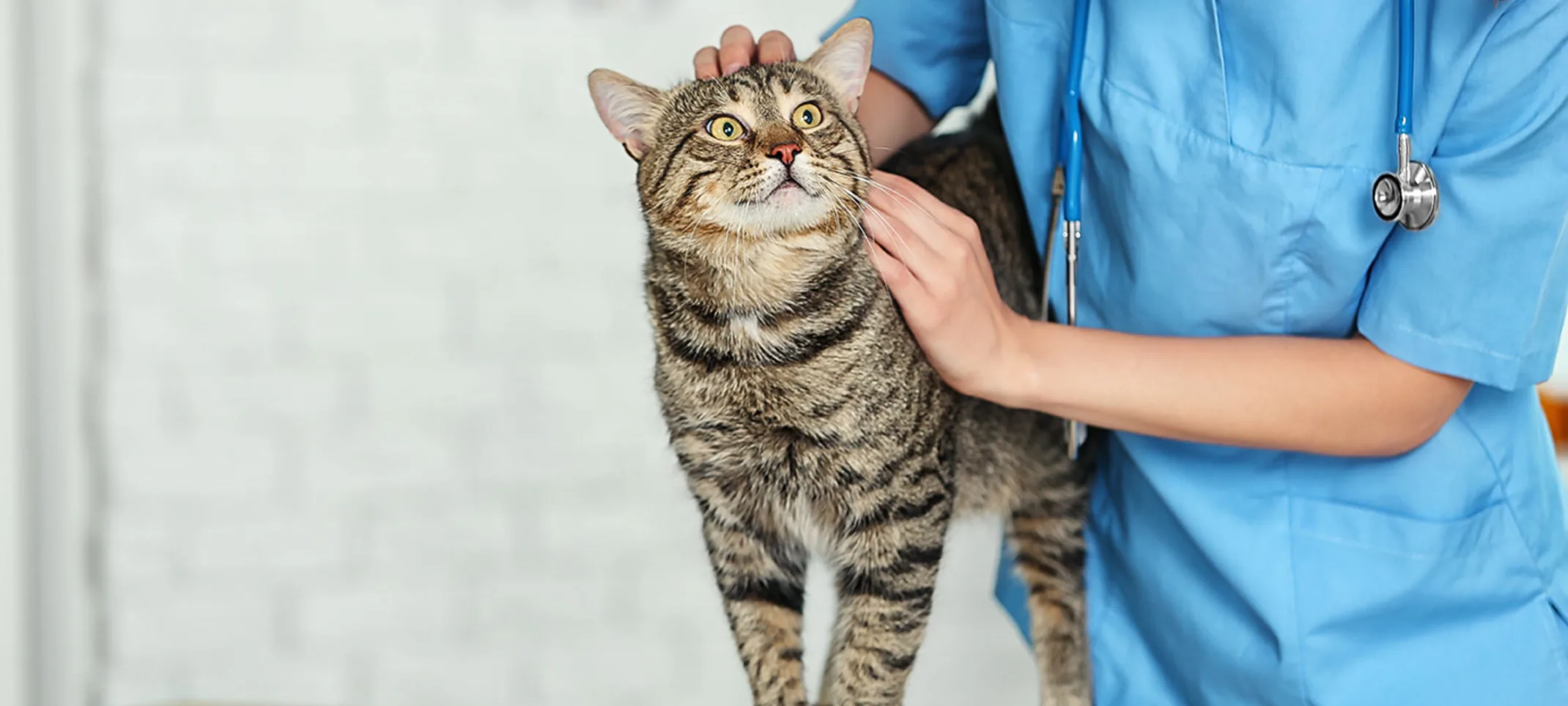West Frederick Veterinary Hospital
Radiography
We’re equipped to perform routine radiography services to identify many types of illness or injury when pets are sick or suffer a trauma.

Frederick Veterinary Radiology
Comprehensive Diagnostic Imaging
Radiology is an important tool in the arsenal of technologies we use to monitor your pet’s health. West Frederick Veterinary Hospital offers both x-ray and ultrasound services to assist with our evaluation of your pet’s normal health or more urgent conditions.
As an American Animal Hospital Association (AAHA) accredited animal hospital, we’re proud to offer the latest technologies for the benefit of your pet. Radiographs – the images which x-rays or ultrasounds produce – help us get a better look at what’s going on inside your pet without taking any invasive measures.
If your pet is suffering from an injury or has just swallowed something they shouldn’t have, call (301) 888-6626 so our Frederick veterinarians can help.
Overview
Radiography, also known as X-rays, is one of the most common and valuable medical diagnostic tools. X-rays are highly useful for screening areas of the body that have contrasting tissue densities, or when evaluating solid tissues.
Why would my pet need X-rays?
If your pet is sick or has suffered a trauma, X-rays provide a minimally invasive tool to help our doctors diagnose your pet. X-rays are also used in general wellness exams to diagnose potential problems before they become serious.
The Difference Between X-Rays & Ultrasounds
Both x-rays and ultrasounds give us the ability to see beyond the fur at your pet’s internal structures. The biggest difference between these two types of radiological tests is that x-rays are used to image the solid or dense parts of your pet’s body, while ultrasounds are used to image the soft tissues inside your pet’s body. Happily, both of these methods are non-invasive and pain-free! Our veterinary team is highly trained and will do everything they can to keep your pet comfortable during their radiological imaging.
When is X-ray testing appropriate?
We may recommend veterinary X-rays as part of a diagnostic procedure if your pet is experiencing any health conditions or as a preventive measure in a routine senior wellness examination. We use radiology alone or in conjunction with other diagnostic tools depending on the patient’s condition. We’re fully equipped to perform routine radiology services to identify many types of illness or injury when pets are sick or suffer a trauma.
How is X-ray testing used?
X-rays can be used to detect a variety of ailments in animals including arthritis, tumors, bladder and kidney stones, and lung abnormalities such as pneumonia. They are also used to evaluate bone damage, the gastrointestinal tract, respiratory tract, genitourinary system, organ integrity, and even identify foreign objects that may have been ingested. Dental radiographs help distinguish healthy teeth from those that may need to be extracted, and identify any abnormalities beneath the gums including root damage, tumors, and abscesses. In some cases, we may need to sedate your pet or use short-acting general anesthesia.
X-Rays: The Basics
To create their images of bones and muscles, x-rays use electromagnetic radiation. These are still images that can either be developed on film or viewed on a computer monitor. Digital x-rays provide a high degree of detail which can be very helpful for pets who have broken a bone or are getting dental work. Though x-rays are non-invasive and pain-free, your pet may need to be sedated in order to lie still enough to capture a clear image. Our x-rays are reviewed by Board Certified Veterinary Radiologists.
X-rays can be used for:
Imaging bones and muscles
Diagnosing traumatic injuries
Monitoring the healing of broken bones
Locating foreign objects
Identifying tumors
While x-rays are very safe, they do still expose your pet to a small dose of radiation. If your pet is pregnant, we may recommend alternative imaging.
The Basics of Ultrasounds
To create images of soft tissues, ultrasounds use high-frequency soundwaves. Ultrasounds produce real-time images which can be viewed on a computer screen or printed as a still image. Since ultrasounds do not use radiation to produce their images, they are completely safe for use on pregnant pets and delicate tissues.
Ultrasounds can be used for:
Examining the cardiovascular system
Inspecting lumps or masses
Monitoring pregnancy
Diagnosing possible organ damage
Because ultrasounds are best used to look at the soft tissues of your pet’s body, we’ll order an x-ray if we need a closer look at their bones or muscles.
Questions about radiology at West Frederick Veterinary Hospital? Call (301) 888-6626 or contact us online for more information.

